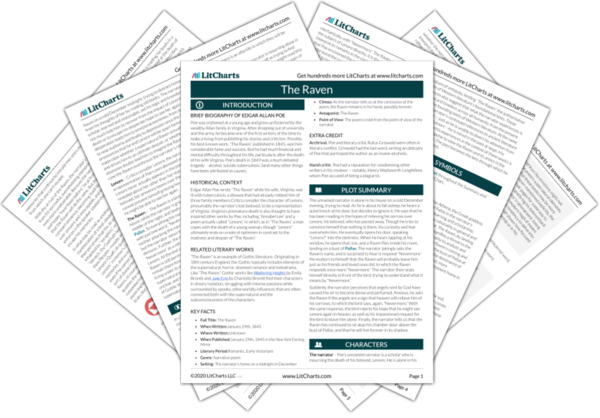Next
Summary
The Raven Study Guide |
Next
Summary
|
Welcome to the LitCharts study guide on Edgar Allan Poe's The Raven. Created by the original team behind SparkNotes, LitCharts are the world's best literature guides.

Archrival. Poe and literary critic Rufus Griswold were often in literary conflict. Griswold had the last word, writing an obituary of Poe that portrayed the author as an insane alcoholic.
Harsh critic. Poe had a reputation for condemning other writers in his reviews — notably, Henry Wadsworth Longfellow, whom Poe accused of being a plagiarist.